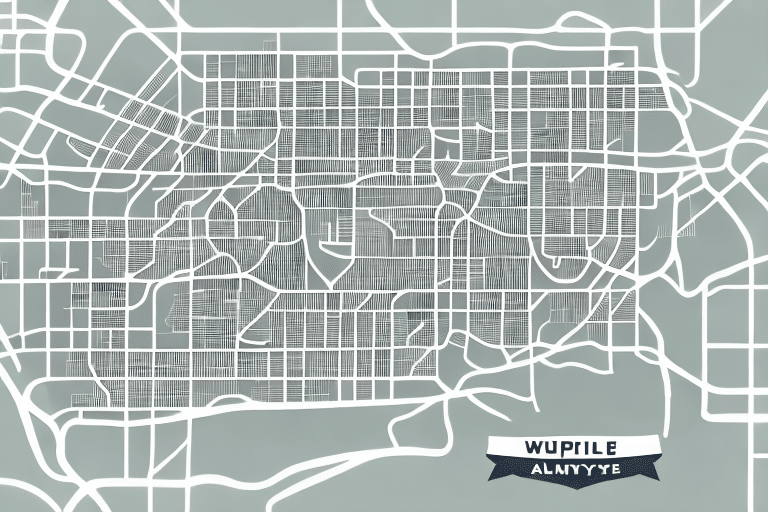The Importance of Multiple Warehouse Locations for Your 3PL Provider
For business owners relying on third-party logistics (3PL) providers to streamline supply chain operations, partnering with a provider that has multiple warehouse locations is crucial. This approach offers numerous benefits, including faster shipping times, lower storage fees, improved customer satisfaction, and reduced risks of supply chain disruptions. Let’s explore why multiple warehouse locations are essential for modern businesses and what to consider when selecting the right 3PL provider.
The Advantages of Multiple Warehouse Locations
Whether operating in the B2B or B2C sectors, maintaining optimal inventory levels and minimizing order fulfillment times are paramount. A 3PL provider with multiple warehouse locations can offer several key advantages:
- Enhanced Inventory Management: Strategically placed inventory reduces the risk of stockouts and ensures product availability, while also lowering shipping costs and transit times by shipping from the nearest warehouse.
- Competitive Edge: Faster shipping times and a broader product range attract and retain customers who prioritize convenience and efficiency, fostering customer loyalty and driving sales growth.
- Scalability: Multiple locations allow 3PL providers to handle increased order volumes during peak seasons or business expansions without compromising service quality.
According to the Forbes Technology Council, companies with distributed warehouse networks experience up to a 30% improvement in delivery speed.
Increased Efficiency in Shipping and Handling
Multiple warehouse locations enable efficient distribution of goods, resulting in faster delivery times and lower overall shipping costs. By positioning inventory based on customer locations and other key factors, orders are shipped from the nearest warehouse, reducing transit times and minimizing the risk of transportation damages.
Optimized Order Processing
With inventory spread across various locations, 3PL providers can manage and process more orders simultaneously, which is particularly beneficial during peak seasons or periods of rapid business growth.
Improved Inventory Tracking
Multiple locations enhance inventory tracking and management, reducing the likelihood of stockouts or overstocking. This optimization leads to lower carrying costs and improved financial performance.
Research from the Supply Chain Digital highlights that businesses utilizing multiple warehouses see a 20% reduction in shipping costs.
Enhanced Customer Service with Regional Warehouses
Today’s customers demand fast and reliable deliveries. Regional warehouses help meet these expectations by providing quicker and more flexible shipping, returns, and exchange options, leading to enhanced customer experiences and stronger brand loyalty.
Faster Delivery Options
Proximity to customers allows 3PL providers to offer same-day or next-day delivery services, setting businesses apart from competitors.
Sustainable Practices
Regional warehouses reduce the carbon footprint of supply chains by minimizing transportation distances, supporting companies committed to environmental sustainability.
According to the GreenBiz, optimizing warehouse locations can decrease a company’s carbon emissions by up to 15%.
Cost Savings on Shipping and Storage Fees
Multiple warehouse locations can lead to significant savings on shipping and storage costs. Shipping products from the nearest warehouse reduces transportation expenses, and diversified storage options can take advantage of lower storage fees in different regions.
- Lower Shipping Costs: Proximity to customers reduces the distance and cost associated with deliveries.
- Optimized Storage Fees: Utilizing warehouses with more affordable rates helps manage storage expenses effectively.
A study by Investopedia found that distributed warehousing can reduce overall logistics costs by up to 25%.
Reducing Supply Chain Risks with Multiple Locations
In an unpredictable business environment, relying on a single warehouse location poses significant risks, including natural disasters, power outages, cyberattacks, and labor strikes. Multiple warehouse locations mitigate these risks by ensuring that operations can quickly shift to alternative sites if one location is compromised.
- Operational Resilience: With backup locations, businesses can maintain continuity and minimize downtime during disruptions.
- Customer Trust: A resilient supply chain builds confidence among customers, suppliers, and investors.
The McKinsey Global Institute reports that resilient supply chains can recover 50% faster from disruptions.
Choosing the Right Warehouse Locations
Selecting optimal warehouse locations is critical for maximizing the benefits of a multi-warehouse strategy. Consider the following factors when evaluating options:
Proximity to Customers and Suppliers
Choose locations close to your customer base and suppliers to reduce transportation costs and transit times. Utilize data analytics and forecasting tools to identify key regions for strategic warehouse placement.
Infrastructure and Accessibility
Ensure that warehouses have adequate space, security, and technological infrastructure. Accessibility to major transportation hubs, such as highways, ports, and airports, is essential for efficient logistics operations.
Cost and Regulations
Evaluate storage fees, labor costs, and regional regulations to ensure financial viability and compliance.
Insights from the Logistics Management emphasize the importance of balancing cost with accessibility and infrastructure quality in warehouse location decisions.
The Role of Technology in Managing Multiple Warehouses
Leveraging advanced technology is essential for efficiently managing multiple warehouse locations. Key technologies include:
- Warehouse Management Systems (WMS): Integrate with enterprise resource planning (ERP) software to provide real-time visibility into inventory levels and order statuses.
- RFID and Barcode Scanners: Enhance inventory tracking accuracy and streamline order processing.
- GPS Tracking: Monitor shipments in real-time to optimize routing and delivery schedules.
- Cloud-Based Platforms: Facilitate seamless communication and data sharing across multiple locations.
According to Supply Chain Digital, companies that adopt advanced warehouse technologies can improve operational efficiency by up to 40%.
Case Studies: Successful 3PLs with Multiple Warehouse Locations
Real-world examples demonstrate the effectiveness of multiple warehouse locations in enhancing 3PL operations:
Amazon
Amazon operates over 175 fulfillment centers in North America alone, enabling it to offer same-day or next-day delivery to millions of customers. This extensive network supports Amazon’s reputation for rapid and reliable service.
Zara
The Spanish fashion retailer Zara operates over 2,000 stores in more than 80 countries, supported by a sophisticated supply chain that includes regional and satellite warehouses. This setup allows Zara to launch new collections swiftly and respond quickly to changing fashion trends.
These case studies illustrate how multiple warehouse locations, combined with advanced technology, can drive operational success and customer satisfaction.
Common Challenges and Best Practices
Managing multiple warehouse locations presents challenges, including coordinating orders, staffing, workflows, regulatory compliance, and handling unexpected events. Implementing best practices can mitigate these challenges:
- Effective Communication: Establish clear channels with 3PL providers and stakeholders to ensure alignment and transparency.
- Performance Monitoring: Set up key performance indicators (KPIs) and benchmarks to track operations and measure success.
- Continuous Improvement: Regularly review and refine strategies based on feedback from customers and employees.
Adhering to these best practices can help businesses maximize the benefits of a multi-warehouse strategy while minimizing potential risks.
Future Trends in Warehousing and Logistics for 3PLs
The warehousing and logistics landscape is evolving rapidly, driven by technological advancements and changing consumer demands. Key trends to watch include:
- Artificial Intelligence and Machine Learning: Enhance predictive analytics, inventory management, and demand forecasting.
- Smart and Green Technologies: Adoption of solar panels, electric vehicles, and automated robots to improve sustainability and efficiency.
- On-Demand Warehousing: Flexible warehousing solutions that can quickly scale based on demand fluctuations.
- Micro-Fulfillment Centers: Smaller, localized warehouses that enable ultra-fast delivery services in urban areas.
Staying abreast of these trends and investing in the right technologies will help 3PL providers maintain competitiveness and support business growth.
Conclusion: Investing in Multiple Warehouse Locations is a Strategic Move
Partnering with a 3PL provider that has multiple warehouse locations is a strategic investment for optimizing supply chain operations and exceeding customer expectations. This approach enhances efficiency, improves customer service, reduces costs, and mitigates risks. When selecting a 3PL provider, evaluate their experience, expertise, technology infrastructure, and alignment with your business goals. Request references and case studies to validate their success in managing multi-warehouse operations. With the right 3PL partner, your business can achieve its logistics objectives and drive sustainable growth.






















